Selecting the Proper Ski Waist Width
You’ve gotten an enormous vary of widths to select from when making a ski buy, from 60-millimeter racing skis to 130-millimeter big-mountain boats designed for excessive locations like Alaska. After years of trending ever-wider, we have seen the market beginning to degree off over the previous few seasons by way of ski waist width. That being stated, 2024 fashions are virtually unrecognizable in comparison with even 15 years in the past. Under we study the components that play into your ski shopping for resolution, together with a take a look at width-related ski classes, new applied sciences which can be serving to make vast skis higher for all-mountain use, and the significance of location and talent. For our prime picks in every class, see our articles on the most effective all-mountain skis, greatest backcountry skis, and greatest powder skis.
Editor’s notice: We up to date this text on July 19, 2024, to make sure all info was present on the time of publishing, which concerned swapping a couple of product references to the newest fashions. We additionally expanded our part on location to incorporate info on snow varieties and added new images from latest testing.
Desk of Contents
Ski Width Measurement
Formed skis have been round for quite a lot of years, and their hourglass look is outstanding on downhill fashions. Reflecting the variable width silhouette, there are three frequent factors of measurement: on the tip (the shovel or most frequently the widest a part of the ski), the waist (center), and the tail (again). Ski dimensions are measured in millimeters and infrequently embody three numbers within the following format: 128-98-118mm (tip-waist-tail). Whereas every of those dimensions contributes to the general efficiency and really feel of a ski, the center quantity—sometimes called waist or width underfoot—is the first consideration for many and can have the most important affect on the ski’s means in various circumstances and terrain. The typical quantity of snowfall, kind of snow (wetter vs. drier), and sort of terrain you intend to ski might help inform which waist measurement will greatest fit your wants.
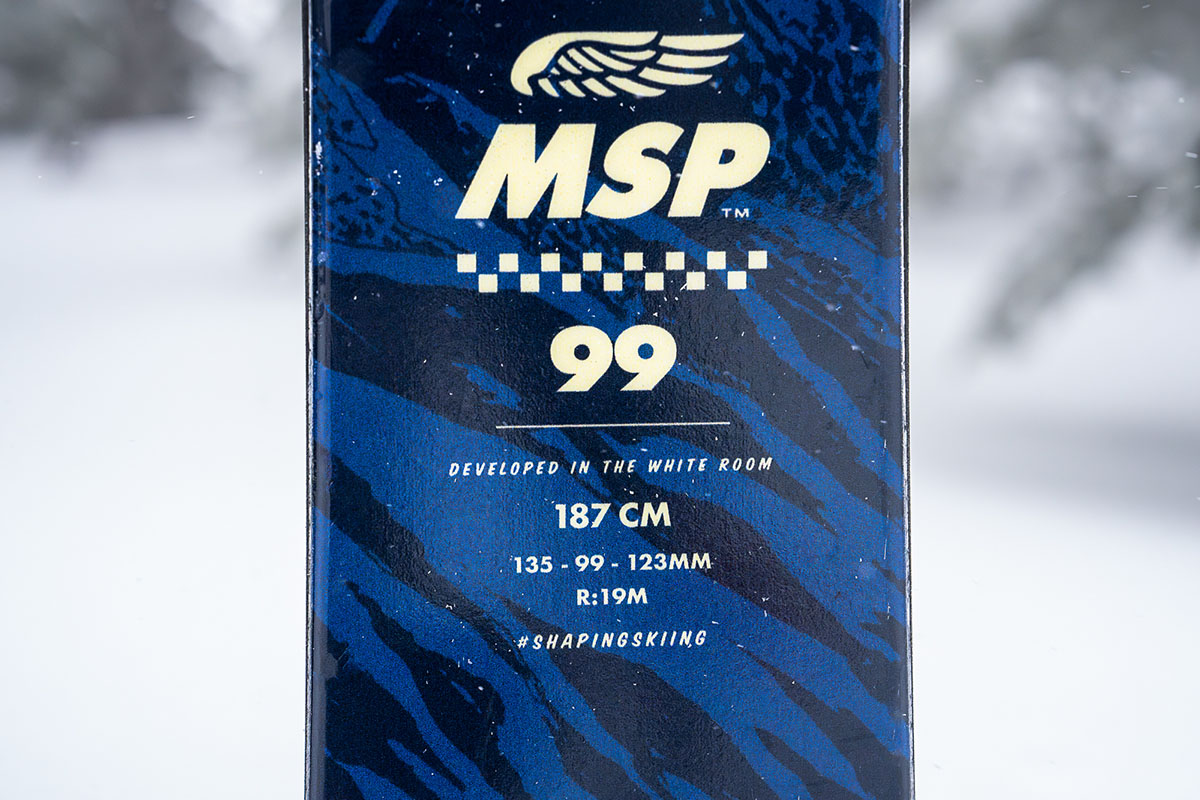
Ski Classes Outlined
Typically, a slim ski excels in flip initiation and carving and subsequently is used for racing, ski mountaineering, and customary use on hardpack. They’re additionally simpler to deal with for newcomers nonetheless placing collectively the fundamentals on stability and edging (in the proper circumstances, after all). Nonetheless, these skis instantly sink beneath the floor in powder and require lots of effort to maintain the ski suggestions up, particularly in additional variable circumstances. Huge skis, then again, have extra floor space and subsequently present extra flotation (assume snowshoes for example). This implies wider skis carry out nice in powder however take extra effort to show and are more durable to regulate and sloppier on groomers or icier slopes. All-mountain skis fall someplace within the center as probably the most versatile kind of ski that—at the least in concept—can deal with most circumstances fairly effectively.

In an ideal world, you’d have a couple of pairs of skis in your quiver: an excellent slim ski for carving on hardpack, a large ski for these stunning powder days, and a pleasant all-rounder for variable circumstances and terrain. Many people don’t have that luxurious, nevertheless, so it’s necessary to dial in a ski width that can carry out greatest all through the season.
Sadly, you gained’t discover common ski classes by way of waist width. There’s lots of frequent floor, however totally different producers and retailers all have their very own definition of all-mountain skis, powder skis, and many others. As examples, under are ski classes based mostly on width from three main on-line retailers:
Backcountry.com
Carving: Lower than 85mm
Park and pipe: Lower than 90mm (90-99mm for all-mountain versatility)
All-mountain: 85mm to 105mm
Backcountry touring: 80mm to 115mm
Powder: 98mm to 125mm
Freeride: 100mm to 125mm
REI Co-op
Frontside: As much as 85mm
All-mountain: 85mm to 95mm
All-mountain vast: 90mm to 109mm
Backcountry touring: 80mm to 120mm
Powder: 109+mm (males), 100+mm (ladies)
Evo.com
All-mountain: 80mm to 110mm
Ski mountaineering/lengthy excursions: 85mm to 95mm
Mid-winter excursions in deep/variable snow: 100mm to 110mm
Powder: 115mm+
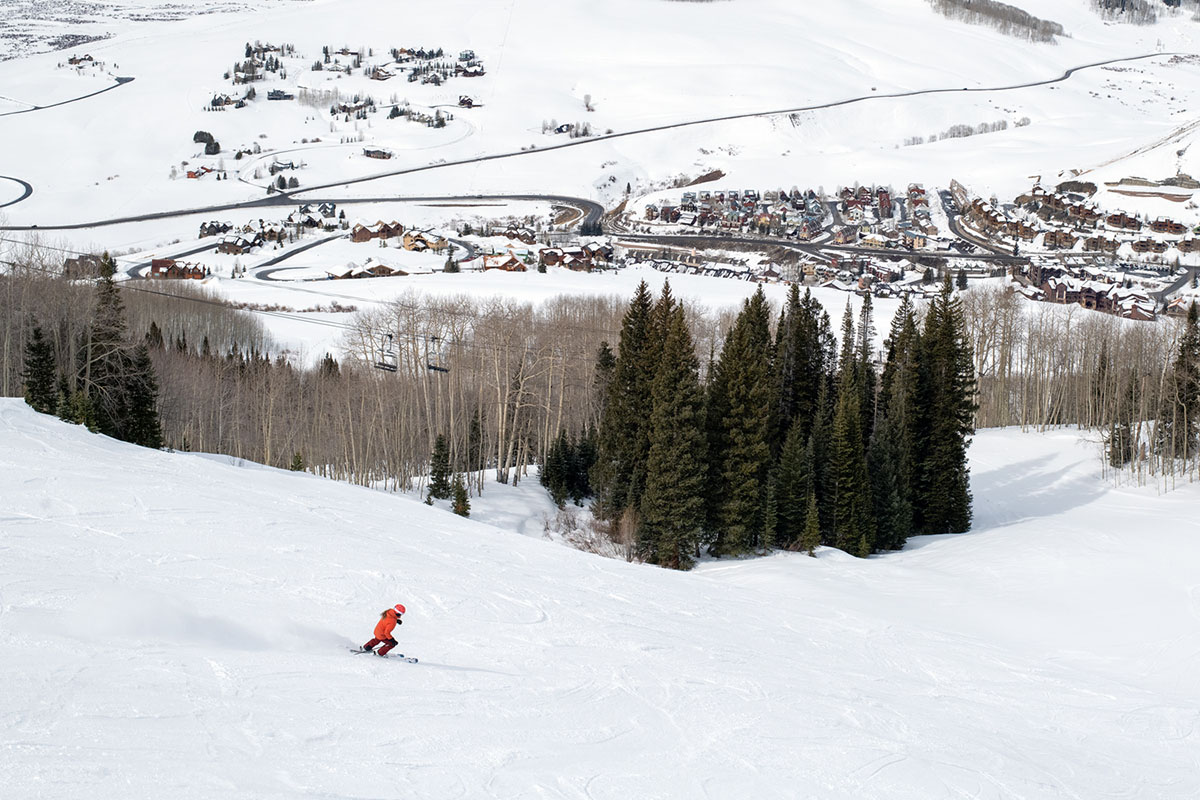
Location, Location, Location
Now that we’ve established what outstanding retailers assume and what ski know-how means by way of width, one other last consideration is the kind of circumstances that you’ll ski most. Let’s first check out the annual snowfall in some fashionable ski areas (we used self-reported knowledge supplied by every resort under):
Stowe, VT: 314 inches per yr
Vail, CO: 354 inches per yr
Breckenridge, CO: 355 inches per yr
Alta, UT: 518 inches per yr
Crystal Mountain, WA: 486 inches per yr
Mt. Baker, WA: 666 inches per yr
Whistler, B.C.: 465 inches per yr
Aleyska, AK: 650 inches per yr
As you may see, there are enormous variations in annual snowfall round North America. However it’s not simply the quantity of snow that falls that is necessary—the kind of snow is arguably simply as vital to think about. What can we imply by kind? Skiers have give you infinite phrases to explain totally different snowpacks: Colorado likes to brag about its “champagne powder,” Californians could also be accustomed to the notorious “Sierra cement” frequent in Tahoe and Mammoth, and Washington has its “Cascade concrete.” All of those names allude to the water content material within the snow, or how moist/dense it’s.
Drier, lighter snow will not be very dense, which means that you simply will not want an ultra-wide ski underfoot to plow by it. This can be a massive purpose that many people in colder, drier locations like Colorado, Idaho, and Wyoming select narrower skis as their day by day drivers. On the flip facet, areas like Washington state and Alaska have a lot wetter snow and hotter temperatures that make the snowpack denser, requiring a wider platform underfoot to assist bust by variable circumstances with much less turbulence.
The underside line is that the place you ski ought to largely dictate the width of your ski. If you happen to reside on the East Coast of the U.S., sadly you may anticipate few powder days, and subsequently a narrower ski designed for hardpack (80mm to 90mm waist) will swimsuit you greatest. If you happen to reside in Bellingham, Washington, and Mt. Baker is your property resort, you positively wish to purchase on the vast finish of the ski spectrum (100mm+), as you may anticipate a excessive proportion of powder days.
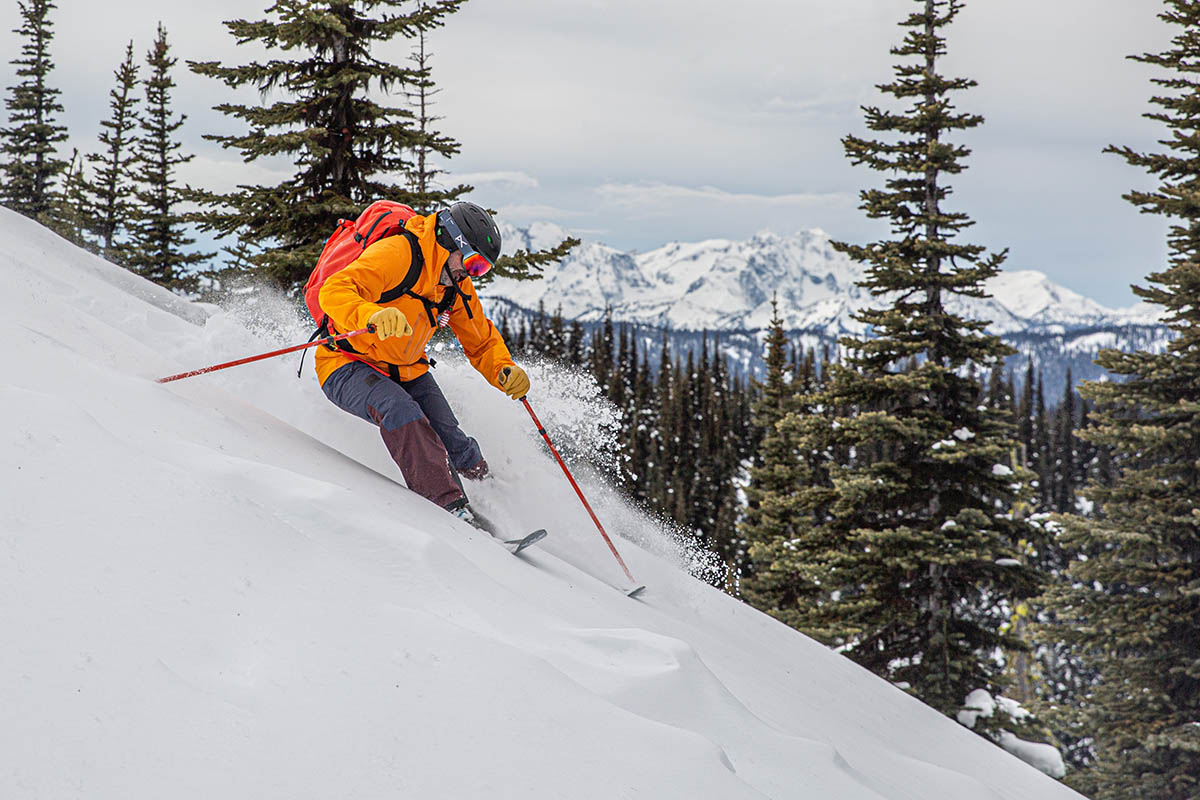
Means Degree and Most popular Terrain
Location issues, however so do the components of the resort (or backcountry) you’ll find yourself snowboarding most. Even newbie skiers in high-snowfall locations like Colorado and Utah will spend the overwhelming majority of their time on groomed runs, and subsequently a narrower ski is greatest. Skiers who wish to cost down moguls can even profit from a narrower ski since it’ll preserve a tighter line by the bumps and be simpler to regulate by fast turns. Intermediate and superior riders will likely be pushing the boundaries extra, each actually and figuratively, and a wider ski makes probably the most sense—particularly for off-piste circumstances. Skilled skiers can even have the ability to management their skis higher and subsequently can tackle a wider and stiffer ski like Nordica’s Enforcer 100 that might be difficult for newcomers.
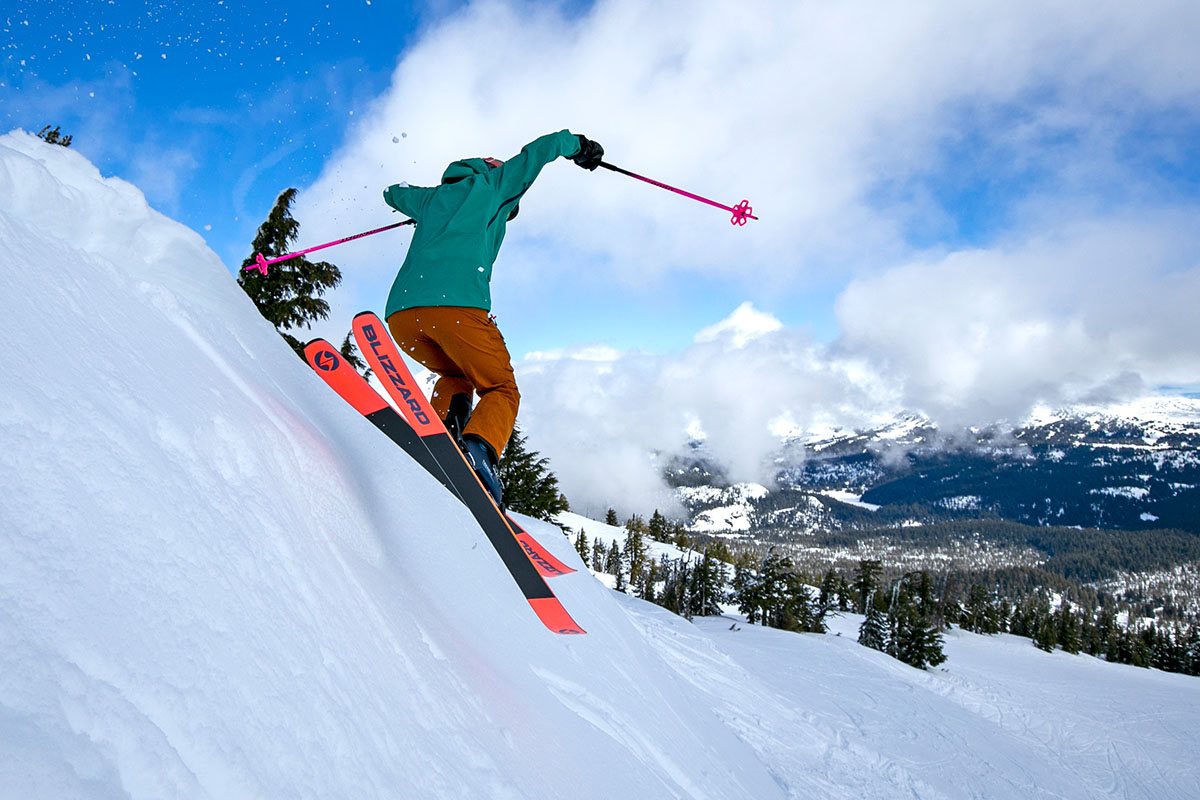
Discovering the Candy Spot
To assist convey every thing full circle, we’ve created our personal standards for ski width choice under. After all, the particular mannequin you select issues within the equation, however we really feel it’s an excellent basic image of the place issues stand in 2024.
Race and GS Skis: 60mm to 70mm
Newbie Skis: 70mm to 80mm
Groomer/East Coast Skis: 80mm to 90mm
Very best All-Mountain East Coaster: 80mm to 95mm
Coronary heart of the All-Mountain Vary: 88mm to 100mm
Very best All-Mountain Rocky Mountains/West Coaster: 90mm to 105mm
Backcountry Touring: 90mm to 115mm
Powder/Huge Mountain Skis: 105mm+
If you happen to solely plan on shopping for one ski and are an intermediate to superior skier, we expect that the true candy spot for all-mountain use is the 88- to 100-millimeter vary. If you happen to reside in a local weather with wetter snow like Washington state or Alaska, think about bumping up barely into the 90- to 105-millimeter vary. These skis will likely be nimble sufficient to carve however vast sufficient to get some float within the deep stuff. Groomer skiers and East Coasters ought to look within the 70- to 90-millimeter vary. And should you’re trying to get off-piste in deep snow, you can begin at 105 and go all the best way as much as 130 millimeters.
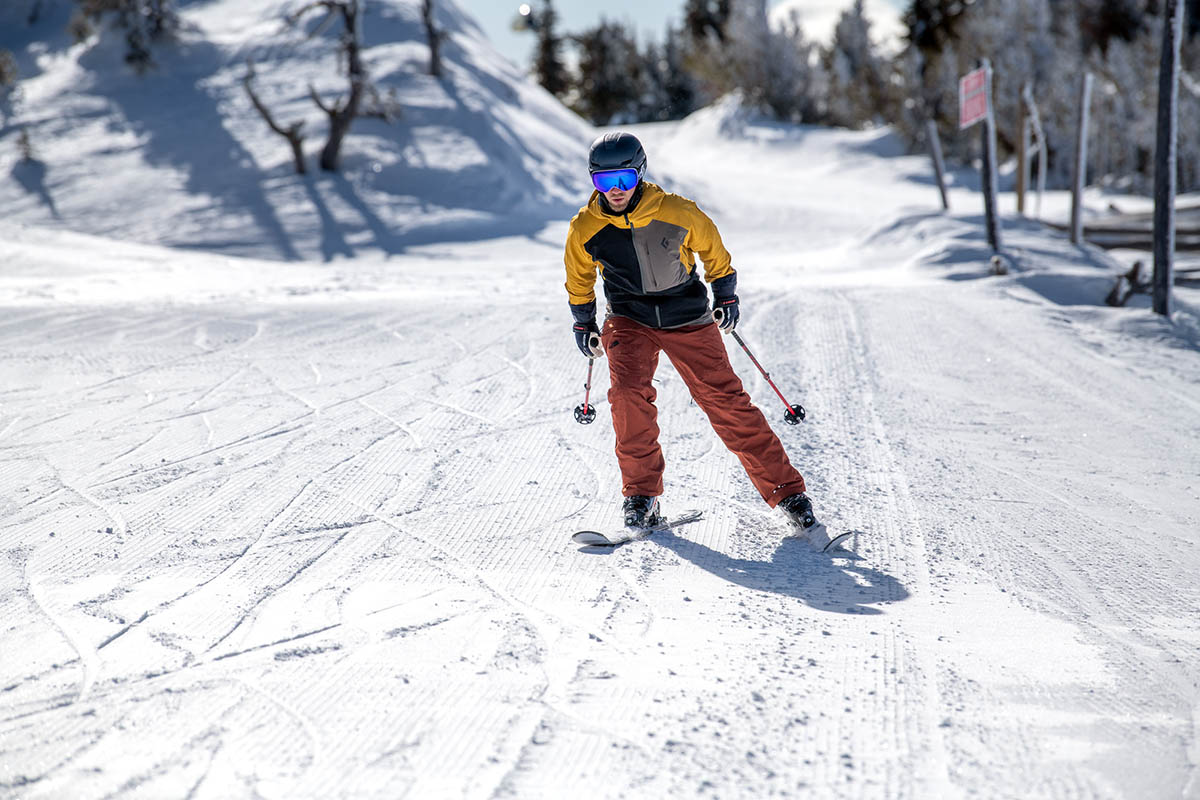
New Expertise Bridges the Hole
As we talked about above, the ski business trended wider for quite a lot of years. Why the modifications? Ski producers put lots of effort into making their vast skis friendlier on groomers by bettering carving means, edge management, and stability. For instance, trendy designs like Nordica’s Enforcer, Volkl’s Mantra, Salomon’s QST, and Head’s Kore make the most of light-weight supplies like carbon fiber and graphene to loosen up the ideas of the skis for improved flotation in comfortable snow and fewer weight to hold whenever you throw them over your shoulder. However it additionally pays off on the resort when you may take a large ski just like the Head Kore 99 and flick it between turns. All through the business, decreasing the swing weight of a ski has change into a excessive precedence in delivering all-mountain versatility to those wider fashions.
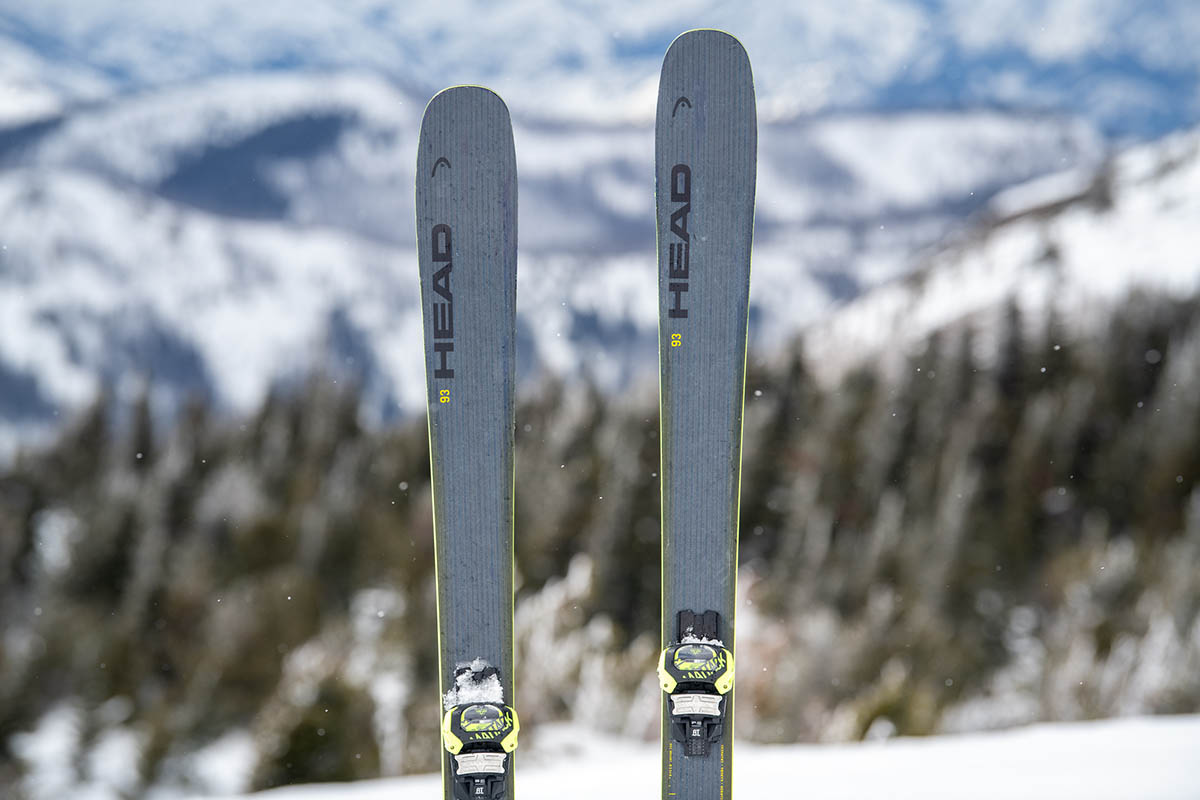
Along with drops in weight, edge management on vast skis has improved considerably through the years. Many older skis had easy profiles that consisted of conventional camber tip to tail, which signifies that the center of the ski was bowed or raised up with contact factors on the prime and backside of the ski. Then rocker, or reverse camber, was developed to maintain the ideas and tails of powder skis out of the deep snow. Individuals quickly realized that snowboarding with rocker on hardpack helped with maneuverability and diminished the tendency to catch an edge in a flip. And by utilizing a milder type of rocker—which means a smaller proportion of the tip and/or tail of the ski is raised off the bottom—points with both finish flapping at excessive velocity on groomers have been vastly diminished in most all-mountain fashions. Therefore the evolution of rocker/camber, which incorporates the most effective of each ski varieties and is among the the reason why wider skis have change into far more versatile.
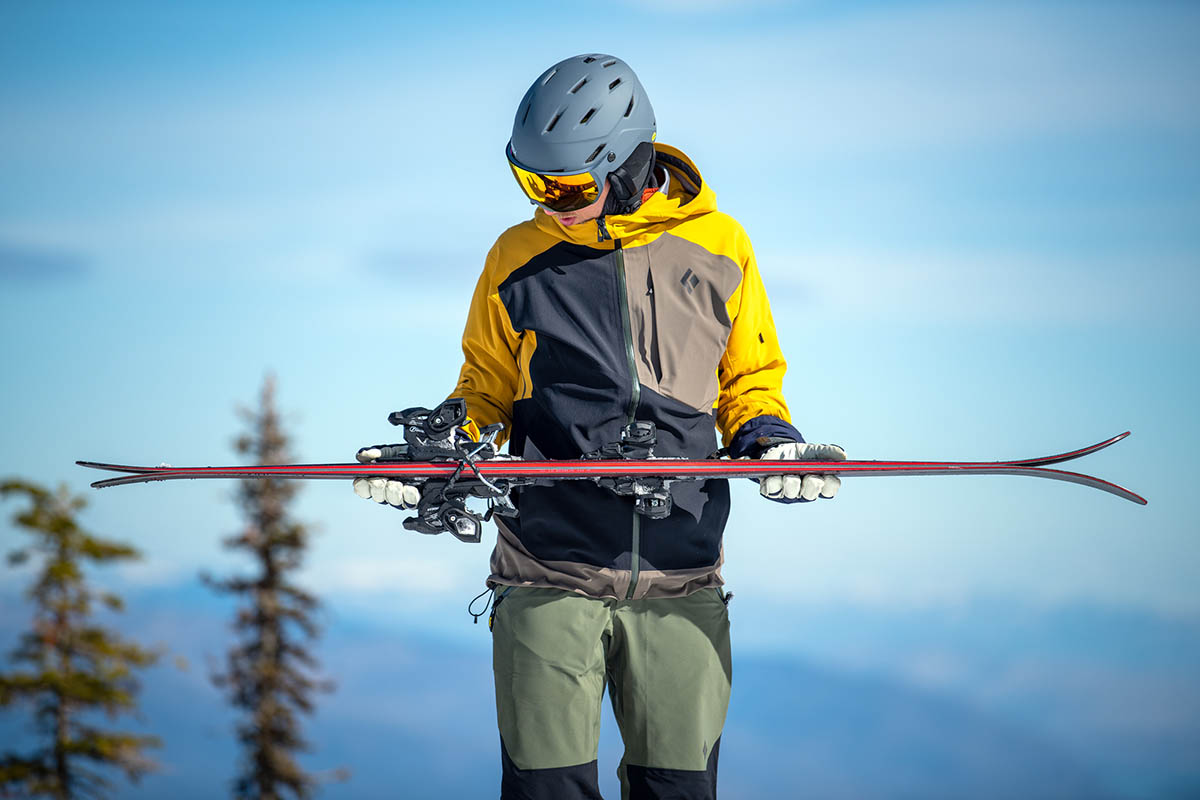
Many all-mountain skis in 2024 are comparatively vast and have a rocker/camber profile with delicate rocker on the tip (and typically on the tail) for flotation in comfortable snow and camber underfoot for edge management and switch initiation. The result’s that vast skis just like the Völkl M7 Mantra (96mm) now have a lot higher energy and switch extra simply than they as soon as did. Mix this with lighter total weights and the incorporation of superior supplies—together with carbon fiber—that stiffen up the skis for a extra responsive journey, and the 90- to 100-millimeter width vary has transitioned from being restricted to powder skis to now having true all-mountain capabilities.
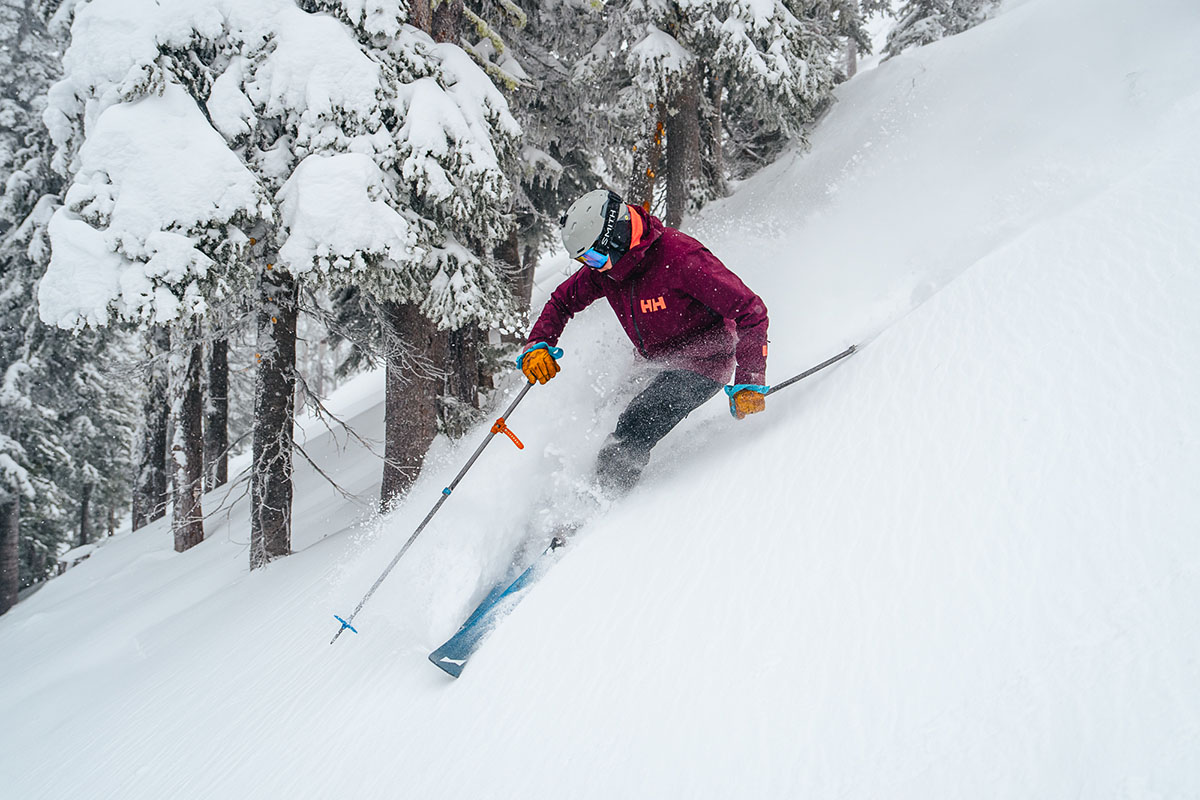
Our High Ski Picks
If you happen to’re nonetheless on the lookout for that excellent ski for this season, under are our prime alternatives from the varied classes. For a wider take a look at the market, together with detailed shopping for recommendation that will help you select the proper setup to your wants, see our full articles on the most effective skis for newcomers, intermediate skis, all-mountain skis, ladies’s all-mountain skis, powder skis, and backcountry skis.
Males’s/Unisex Skis
Newbie: Rossignol Expertise 78 Ca w/Xpress 11 Bindings
All-Mountain (East Coast): Volkl Kendo 88
All-Mountain (West): Nordica Enforcer 100
Powder Skis: Atomic Bent Chetler 120
Backcountry Skis: Blizzard Zero G 105
Ladies’s Skis
Newbie: Rossignol Expertise 78 Ca w/Xpress 10 Bindings
All-Mountain (East Coast): Blizzard Black Pearl 88
All-Mountain (West): Nordica Santa Ana 98
Powder Skis: Coalition Snow Rafiki
Backcountry Skis: Blizzard Zero G 105
Again to Our Ski Waist Width Information See Our Ski Gear Evaluations






.jpg?w=1200&resize=1200,0&ssl=1)